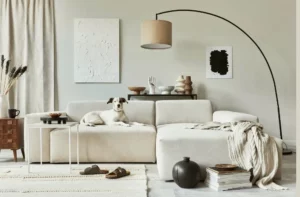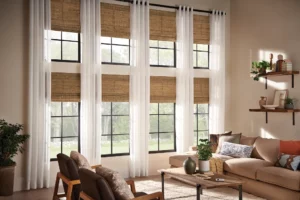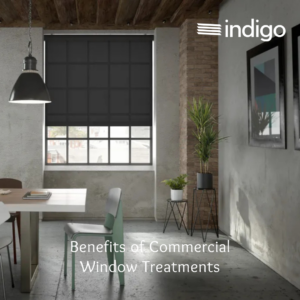What type of window do you have and how often you open it?
Choosing the right blinds can be overwhelming. there is lots to consider like do your windows open in, out or up. The hardware on casement windows can get caught between slats while windows prone to a lot of moisture or condensation can make a fabric window subject to mildew.
When it comes to window treatments, there are a seemingly an infinite number of options to choose from. Because of that, the process can quickly become overwhelming, if you don’t know where to start.
Should All Blinds In Your House Match?
The short answer, NO absolutely not! There are no set rules when it comes to styling your own home. But, DO NOT underestimate the appeal of cohesion! We strongly believe in letting your personality shine! Make your home yours!
Mix and matching window treatments comes down to the layout of your home. If your home is an open concept plan, the preferred choice is to use the same style of blinds, curtains or shutters throughout the open area.
Curb Appeal and Resale Value
A home with matching window treatments tends to look more uniform and appealing from the street (curb appeal). This is why plantation shutters are a popular choice for street-facing windows. Plus, by matching your blinds, curtains or shutters rather than choosing different styles of blinds, this can also be appealing to potential buyers of your home. You will make your Realtor happy!
Pairing Curtains and Blinds
You don’t have to choose between curtains or blinds. By pairing two different products together, you can enjoy the best of both worlds well creating an ecstatically pleasing layered look and feel to any room.
Choose The Blind First
It’s best to decide on the type of blind that best fits the space first. Different rooms require different window treatments, so consider how you require the blind to function.
Settle On Style
Decide on the style of blind, then it’s time to make some design choices around curtains. Pairing blinds and drapery together looks best when a solid colour is chosen for one and a print is chosen for the other. Combining prints on both products can overpower a room, especially in small spaces.
Play With Perception
Benefits of pairing drapery and blinds together is the ability to change the size of the window (at least the perception of it). Make a standard window look larger than it really is by installing blinds slightly below the ceiling (outside mount), with the curtain rod at the same level as the blinds but extended beyond the window. Discuss this with our Design Consultants during your FREE Consultation and Quote.
Don’t be afraid to accessorise
Window accessories can actually help to bring your blind and curtain combination together, without adding unnecessary bulk. Curtain tiebacks can help to create a lovely draped effect, while pelmets can add a neat and stylish finish above the window. When it comes to hardware, we recommend curtain rods with a matte finish.
Window Orientation
West Facing Windows
Allow in the fierce afternoon sun. Consider using horizontal or vertical blinds to protect fabrics and furniture.
South Facing Windows
Offer hot, lazy light year round. Consider using horizontal or vertical blinds to protect fabrics and furniture.
North Facing Windows
Offer clear, consistent light and the coldest exposure. Consider energy efficient shades such as cellular shades.
East Facing Windows
Catch the warm, bright morning light. Consider horizontal or vertical blinds to block out UV rays.
Consider Insulation Factors
Blinds come in a range of materials that can vary in suitability depending. For areas exposed to temperature fluctuations, choose blinds with a white or reflective backing that can help insulate the area. According to this study 30% of the heating and cooling costs of your home are because of air leakage from openings in places like the side of the windows, ceilings, and walls.
Cellular Shades (also known as honeycomb) are the best for insulation values. Surprisingly, shutters rate well for insulation values.
Consider Humidity Levels
Do you live in a high humidity area then select blinds that can stand up to moisture, like faux wood, roller / solar shades or composite shutters. These materials will also be suited for areas like kitchens and bathrooms where moisture naturally occurs in your home.
Room Lighting
Do you prefer a bright and sunny rooms with lots of natural light? Consider Sheer or light filtering blinds that will allow lots of natural light. Selecting Wood and faux wood blinds will allow you to direct the natural light into the room.
Consider Room Darkening or Blackout Shades for a nursery, bedrooms, and media rooms. Consider how much light you’d like to peek through your blinds. To learn more about blackout blinds follow this link.
Window Size and Window Location
Window size plays a major factor in what you can select for blinds. Manufactures have set limits on square footage of material they can provide. These limits consist of weight of material, width or fabric roll. Some blinds, like cellular or roller / solar shades can be railroaded (flipped) to create wider blind options.
Where is the window located? If it is located in a staircase making it harder to reach safely you want to look at motorization options. Or perhaps you are looking to cover sliding glass doors? Choose blinds that are easy to open and close and allow a good clearance to prevent getting tangled up in the blinds when coming in and out of the home.






